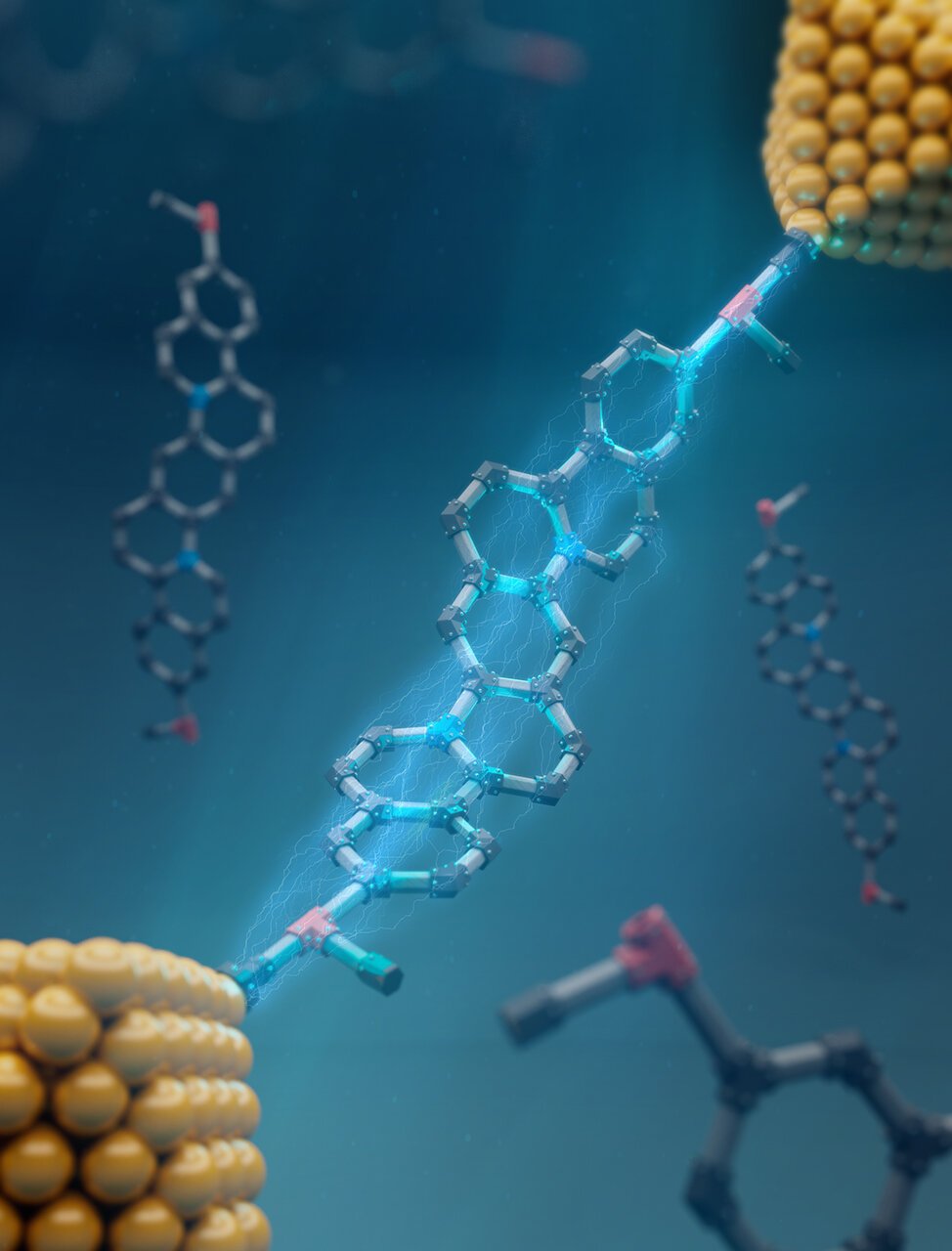
As electronic devices continue to get smaller and smaller, physical size limitations are beginning to disrupt the trend of doubling transistor density on silicon-based microchips approximately every two years, according to Moore’s law. Molecular electronics—the use of single molecules as the building blocks for electronic components—offers a potential pathway for the continued miniaturization of small-scale electronic devices. Devices that utilize molecular electronics require precise control over the flow of electrical current.
However, the dynamic nature of these single molecule components affects device performance and impacts reproducibility.
University of Illinois Urbana-Champaign researchers report a unique strategy for controlling molecular conductance by using molecules with rigid backbones—such as ladder-type molecules, known as being shape-persistent. Further, they have demonstrated a straightforward “one-pot” method for synthesizing such molecules. The principles were then applied to the synthesis of a butterfly-like molecule, showing the strategy’s generality for controlling molecular conductance.
This new research, led by Charles Schroeder, the James Economy Professor of Materials Science and Engineering and Professor of Chemical and Biomolecular Engineering, along with postdoc Xiaolin Liu and graduate student Hao Yang, appears in the journal Nature Chemistry.
“In the field of molecular electronics, you have to consider the flexibility and the motion of the molecules and how that affects the functional properties,” Schroeder says. “And it turns out that plays a significant role in the electronic properties of molecules. To overcome this challenge and achieve a constant conductivity regardless of the conformation, our solution was to prepare molecules with rigid backbones.”
One of the main challenges for molecular electronics is that many organic molecules are flexible and have multiple molecular conformations—the arrangement of atoms due to bond rotation—with each conformation potentially resulting in a different electrical conductance.
Liu explains, “For a molecule with multiple conformations, the variation in conductance is very large, sometimes 1,000 times different. We decided to use ladder-type molecules, which are shape-persistent, and they showed a stable set of rigid conformations so that we can achieve stable and robust molecular junction conductance.”
Ladder-type molecules are a class of molecules that contain an uninterrupted sequence of chemical rings with at least two shared atoms between rings, which “locks” the molecule into a certain conformation. Such a structure provides shape-persistence and constrains the rotational movement of the molecule, which also minimizes conductance variation.
Having consistent conductance is particularly important when the ultimate goal of molecular electronics is for use in a functional device. This means billions of components must have the same electronic properties.
“The variation in conductance is one of the issues that has prevented the successful commercialization of molecular electronic devices. It is very difficult to fabricate the large number of identical components necessary and control the molecular conductance in single molecule junctions,” Yang explains. “If we are able to precisely do this, that can help push the commercialization and make electronic devices very small.”
To control the molecular conductance of shape-persistent molecules, the team used a unique one-pot ladderization synthesis strategy that produced chemically diverse, charged ladder molecules. Traditional synthesis methods use costly starting materials and are usually two component reactions, which limits the diversity of the products. Using the one-pot multicomponent strategy, also called modular synthesis, the starting materials are much simpler and commercially available.
“We can use many different combinations of those starting materials and make a rich diversity of product molecules suitable for molecular electronics,” Liu says.
Further, Liu and Yang applied the rules they learned from ladder-type molecules and demonstrated the broad applicability of shape persistence by designing, synthesizing and characterizing the electronic properties of a butterfly-like molecule. These molecules have two “wings” of chemical rings, and like ladder molecules, butterfly molecules feature a locked backbone structure and constrained rotation. This will pave the way for the design of other functional materials and ultimately, for more reliable and efficient devices.
More information:
Xiaolin Liu et al, Shape-persistent ladder molecules exhibit nanogap-independent conductance in single-molecule junctions, Nature Chemistry (2024). DOI: 10.1038/s41557-024-01619-5
Citation:
Controlling molecular electronics with rigid, ladder-like molecules (2024, August 26)
retrieved 26 August 2024
from https://phys.org/news/2024-08-molecular-electronics-rigid-ladder-molecules.html
This document is subject to copyright. Apart from any fair dealing for the purpose of private study or research, no
part may be reproduced without the written permission. The content is provided for information purposes only.
